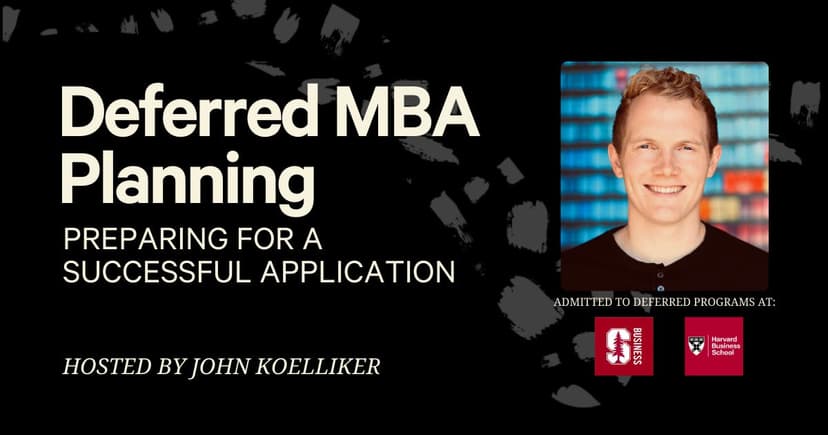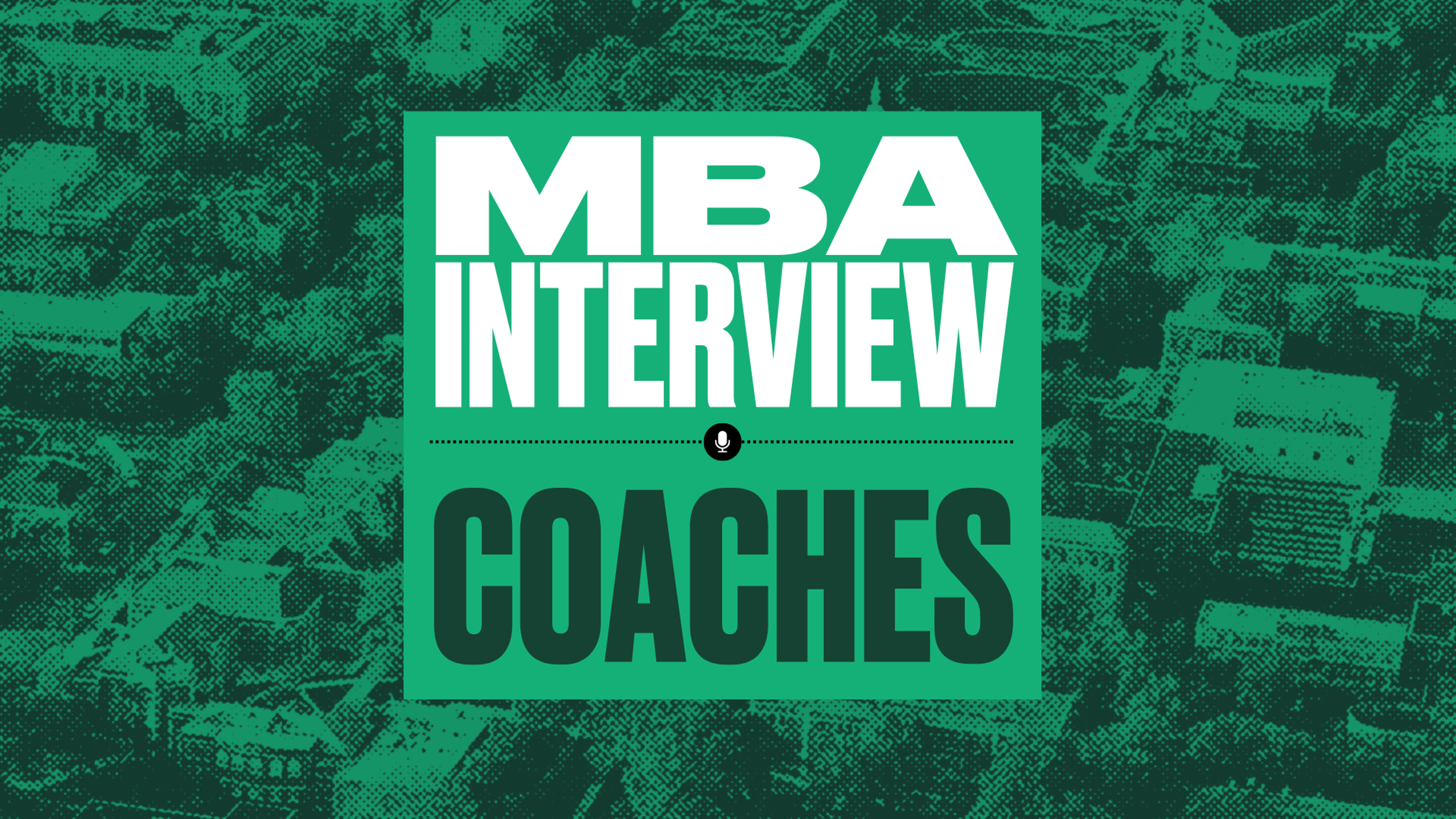
Join a free event
Learn from top coaches and industry experts in live, interactive sessions you can join for free.
During the pandemic, virtual interviews became the standard for all top MBA programs. Even as things return to normal, these virtual interviews will likely continue to be part of the mix. Many, if not most of us, would prefer in-person interviews, but with the help of our guides, and the amazing coaches on Leland, you’ll be able to ace your virtual interview, too.

Most Common Interview Questions of the Top 10 MBA Programs
Download our free guide to the most common MBA interview questions to be as prepared as possible to nail your interview
Here are 6 tips to set you up for an impressive, smooth, and even enjoyable video interview.
1. Treat It Like a Regular Interview
First and foremost, prepare for this interview just like you would for a regular, in-person one. Simple as that.
Practice telling your story, review your resume, read example MBA interview questions, and schedule a mock interview with a Leland coach. (Click here to browse our world-class vetted MBA admissions coaches, many of whom specialize in interview prep.)
Pick out your clothes the night, or a few days, before. Wear the same thing you would have worn to a physical interview (business casual or business formal, depending on the school). Finally, “arrive” 5 to 10 minutes early—even if that means hanging out in the Zoom waiting room for 10 minutes.
2. Set Up Right
Next, pick a strategic setup that will make you look professional, and that won’t distract from the conversation.
First, choose your background. If you’re in a home office, a bookcase is nice. Otherwise, a plain, white wall is a fantastic option. Avoid displaying your bed, your bathroom, or any messes.
Then, think about lighting. Try to set up near a window, preferably a window with a covering, so you can soften the light. Natural light is the most flattering. Whether you use natural light, artificial light, or both, check that the shot is bright enough so you’re visible on screen, but not so bright that you look washed out, or your face is hard to see.
Finally, place your camera at about eye level. If you need to, prop your device up on some books. Test your chosen location and set up so you’ll know exactly what will be included in the shot.
3. Choose the Right Equipment—Then Test It
Once you have your setup figured out, check your WiFi connection, that your camera works, that you’ve updated Zoom, and that your audio works properly.
There’s no need to buy a webcam just for this interview. In fact, purchasing new technology might increase the chance that something goes wrong, so just stick with your laptop, or the camera you’re used to using.
Avoid headphones. You want this to be as similar to an in-person interview as possible, and you’d never wear headphones to a real interview. Your voice will also sound warmer using your computer’s default audio.
Finally, turn everything on and practice 24 hours in advance, preferably before. If the call will be on Zoom, make sure you’re familiar with that app. You don’t want to delay things by not knowing how to join, or accidentally muting yourself. Doing this beforehand will give you time to make necessary rearrangements, or switch out your equipment if it comes to that.
4. Remove Distractions
A real downside to video interviews is that you’ve got a world of distraction right there on your computer. Keep your head in the game, and plan ahead so you can create a distraction-free environment.
First, pick a location where you won’t be disturbed. We’ve all seen those videos with kids/pets entering the frame in the background. Don’t let that be you. Go to a place with a door that locks, or if you need to, reserve a room at your local library.
If you’re taking your call from home, tell your family/roommates about your important interview, and ask them to please keep the volume down. If possible, help them find somewhere else to be during the interview.
Finally, on the day of the interview, remove all other distractions. Mute notifications on your phone and computer. Turn off other devices and tuck them away, and keep pets safely in another room. Tidy your space so you’ll have a clear mind.
5. Take Advantage of Video Format
Video interviews can be tough, but there are also some real benefits. One of the biggest advantages is that you’ll have access to notes, pen and paper, and additional resources, like talking points, on your computer screen. Keep these handy in case you need them to trigger your memory and boost your confidence. Keep a copy of your resume handy, along with a list of questions you want to ask your interviewer, and bullets for other stories you want to share.
That said, don’t go overboard. Use notes sparingly. The point is to show up confident and relaxed, not to be glancing nervously at support materials the whole time. Your MBA interviewer will be concerned if you’re constantly looking away, or if they think you’re reading prepared statements.
6. Bring Positive Energy
Finally, bring your most positive self to the interview. It can be hard to do this over the video because you can’t rely on normal interactions—handshakes, posture, facial cues—so you’ll have to dial it up just a notch. Smile and nod, sit up straight, and do your best to look into the camera (not at the screen, or at your own picture). You may even want to get your heart rate up by running a lap or two around your room. Bring positivity!
Remember: “People won’t remember what you said or did, but they will remember how you made them feel.” — Maya Angelou (and plenty of other people)
We also highly recommend doing a mock interview with an expert - it is the #1 most helpful thing you can do to prepare. Check out some coaches here: The Best Admissions Consultants for Your MBA Interview
Here are some other resources you may find helpful:
Browse hundreds of expert coaches
Leland coaches have helped thousands of people achieve their goals. A dedicated mentor can make all the difference.


























